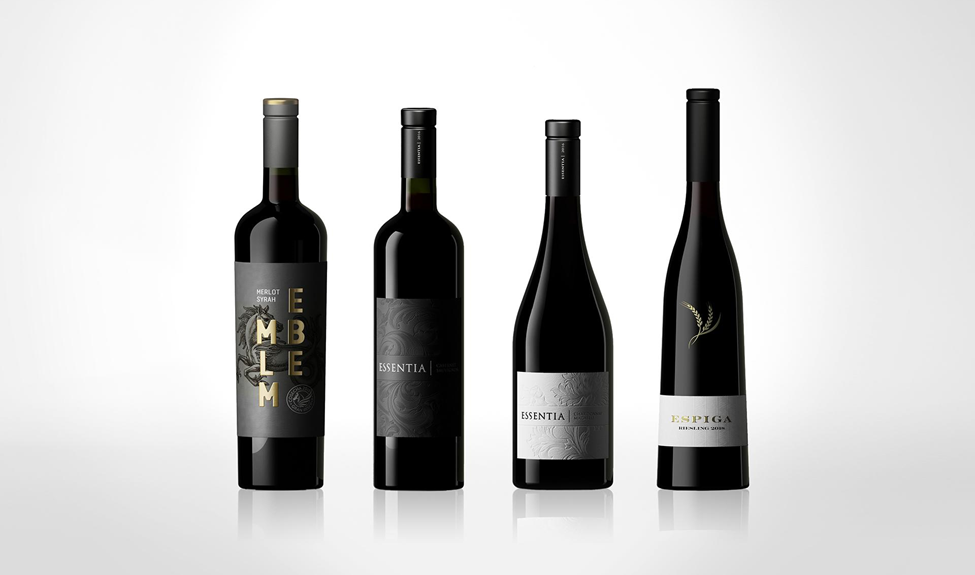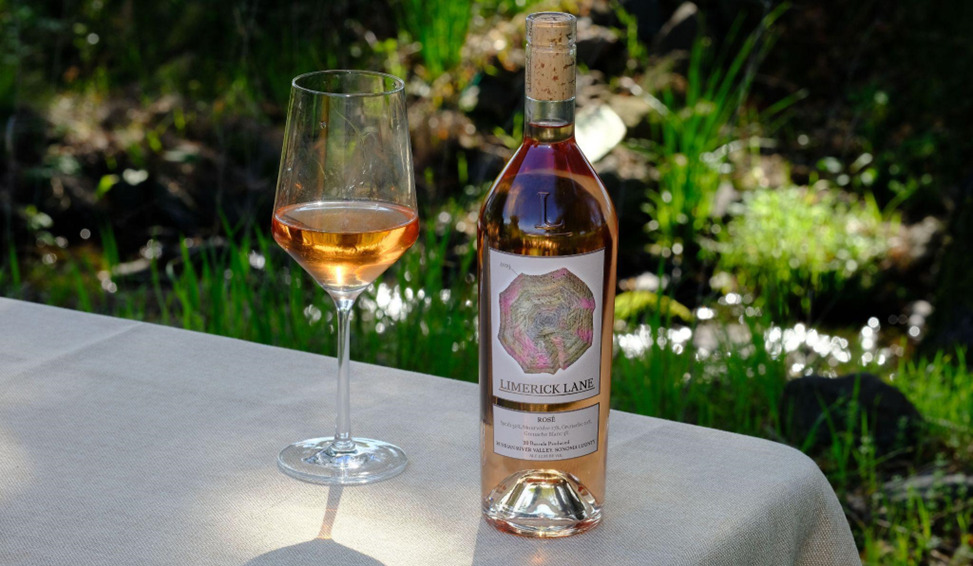How Glass Bottle Packaging Tactics Can Grow Your Wine Brand
Why Is Glass Bottle Packaging Important?
Wine can be packaged in a variety of ways; however, consumers continue to prefer the conventional glass bottle packaging format, which is by far the most popular. Although glass bottle packaging has less flexibility in its ability to capture attention than labels , it can still convey a lot of information to the consumer and increase brand standout in-store.
Purchasing wine is seen as having a high level of risk. People don’t want to risk purchasing wines that result in poor wine quality, financial risk, or social embarrassment. Therefore, consumers search for information when browsing in-store to lower risk: price, varietal, region, brand/winery, or in-store recommendation.
The majority of people who aren’t particularly interested in wine conduct their informational searching in-store and rely primarily on visual cues. A customer is more likely to buy wine if they recognise the brand name or have already tried it. Factors like brand name, packaging, grape variety, and price are all taken into consideration.
The combination of packaging elements conveys a message. The customer then processes this information, developing their feelings towards it and inferring its meaning; how the packaging performs under this scrutiny is crucial in this situation.
The design and color of the imagery used on wine labels can differ significantly depending on price points and have a big impact on a confused customer in-store.
For instance, cheaper wines typically use illustrative and natural imagery, whereas more expensive wines rely solely on typographic and decorative labels. To further emphasize the idea of a premium brand, high-end wines frequently use the colors black and navy.
White wines often tend to use golden colors, though premium brands also tend to utilize that color scheme primarily. In contrast, lower-priced white wines will use more colors in the spectrum, tending to use bold colors quite frequently, perhaps to appeal to younger women. The treatment and placement of type can also affect how the consumer reacts to the wine.
Can’t I Just Use Whatever Glass Bottle Packaging For My Wine Brand?
Consider the most recognizable wine brands available today. Some of them have histories of a century or longer, such as the well-known Familia Torres with 150 years of winemaking experience.
Obviously, that kind of experience and popularity is pretty hard to beat. This is why, for up-and-coming wine brands, unique packaging, wine bottle design, and labeling are crucial to achieving the most brand standout for your retail wine brand when on shelf. It is critical to the success of the product.
By taking the time to understand what is important to your target audience, and combining that with current trends in wine packaging, you can position your wine brand to outcompete your competitors and establish a strong foothold in the wine industry.
This blog will cover different glass bottle packaging strategies that can help your wine business thrive in a crowded market, as well as emerging wine packaging trends for your consideration.
Positioning Wine Brands for Success: The 3 Deciding Factors
When 19 Crimes started to appear in stores, nobody anticipated that it would become the popular wine brand that it is today. While the wine’s bold, yet velvety, flavor keeps drinkers satisfied and interested, it is the precisely engineered storytelling of its packaging that really gives it a unique personality.
The most well-known wine brands have a story or a sentiment that drives them off the shelves into people’s hands, and it all starts with the glass bottles and their accompanying components. And just like other successful wine brands, you need a packaging strategy.
Take a look at the three practices for packaging that can revitalize your wine brand and make it stand out from the competition.
1. Unique Labeling

Naturally, you want your wine brand to stand out from your competitors and influence the typical consumer to choose your bottle from the store. That’s obviously easier said than done because there are literally thousands of wine bottles to choose from, and many consumers frequently decide which bottle to pick in only a few seconds; that’s where quality wine labels come in.
A label is the “face” of every wine bottle packaging and serves as more than just a straightforward piece of information. In fact, in supermarkets, it is frequently the only factor on which purchasers base their choice.
Take a look at the most prominent wine brands; one thing they all have in common is a unique label that stands out.
Your label is crucial in creating positive brand connotations, especially if your wine brand is new or unfamiliar to the consumer. Your wine brand’s vibe can be communicated by using the right fonts, colors, and images on the label.
Also, keep in mind the caliber of the label paper you use. There’s a high probability that your wine will eventually wind up in iced wine boxes if it’s best served chilled. As such, an inferior paper will crease or curl, which undermines the “luxury” impression you are trying to portray for a wine customer who has just spent $20 on a bottle, for example.
2. Bottles and Corks That Stand out

Choosing the size, shape, and color of your bottle is the first step in cementing the brand perception of your wine. After that, you can then create the label. This guarantees that every time a label is applied, it will fit perfectly.
A unique bottle has many benefits. For one, many customers have unintentional associations with bottles and closures, much like they do with labels. A heavier bottle is considered to be more premium in terms of weight, and vice versa. Yet, due to shifting trends towards eco-friendly packaging solutions, lighter glass has gained elevated status.
Worldwide, glass manufacturing produces at least 86 million tonnes of carbon dioxide every year, so the reduction in the amount of glass produced and the reduced shipping weights contribute to lowering the carbon footprint associated with bottling wine. More on eco-friendly packaging later on.
When it comes to champagne bottles, using natural corks typically signifies premium quality wine. On the other hand, screw caps are associated with young, fruity, or fresh wines.
Wines that have matured in oak are excellent candidates for synthetic corks.
3. Unique Brand Story

Effective storytelling helps establish an emotional connection that distinguishes one brand from another. It’s a principle that all effective marketing strategies must follow. Make the customer feel as though joining your narrative will improve their quality of life, and they will gladly buy from you.
Why did 19 Crimes garner so much attention and positive press even though it seemed to do everything wrong? It didn’t do anything wrong at all; a great, compelling brand story was composed for it that brings the brand to life.
The characters on the 19 Crimes labels were actually “talking” through augmented reality, telling the story of convicts sent to serve sentences in 19th-century Australian prisons, but who would want to associate with an ex-convict-portraying wine?
Since the label opens a door to a narrative unrelated to wineries, it naturally piques the curiosity of adventurous wine lovers. By breaking from the norm of wine packaging design in a stroke of marketing genius, 19 Crimes was able to increase sales by about 500% in the first 18 months. The brand positioning may seem to you to carry negative connotations, but don’t forget that people love novel ideas, so get innovating!
Every brand, including yours, wants to have this effect while it is on the shelves of a story, so you need to come up with your own unique story—and don’t be afraid to break a few rules while you’re at it.
3 Fantastic Wine Packaging Trends to Help Make a Statement
If you really want to stand out from the crowd, consider adopting one (or a combination of) the following wine packaging trends:
1. Use Unique Bottle Designs
One sure way to blend in is to use the regular bottle designs in the bottling line. You don’t want that. Packaging your wines in uniquely designed bottles makes them stand out immediately because the majority of wines are stored in conventional bottles.
For example, your wines will stand out from the competition when packaged in a whimsically curved or tall, angular container, but the bottom line is to let your wine bottles corroborate your wine brand’s unique story and reflect the essence of the narrative.use
2. Eco-Friendly Packaging
People are becoming more environmentally conscious, which means they are more interested in greener solutions to everyday needs, so we’ve developed eco-friendly products to fit this need. Besides, it’s in all our best interest to save the world as we know it, so why not pack your wine using more environmentally friendly packaging options?
The most common examples of this trend are boxed wines, which have plastic internal liners and recyclable cardboard exterior shells.
3. High-Tech Integration
In today’s technology-driven world, you can use a QR code in the label design of your brand to appeal to a tech-savvy audience. Ingredient list, bottling date, expiration date, and all sorts of intriguing information can all be accessed via a simple QR code.
In fact, 19 Crimes uses augmented reality to tell the 19 unique stories of the ex-convicts depicted on all their bottles, presenting a novelty to wine lovers and making it more fun to drink and share with friends.








